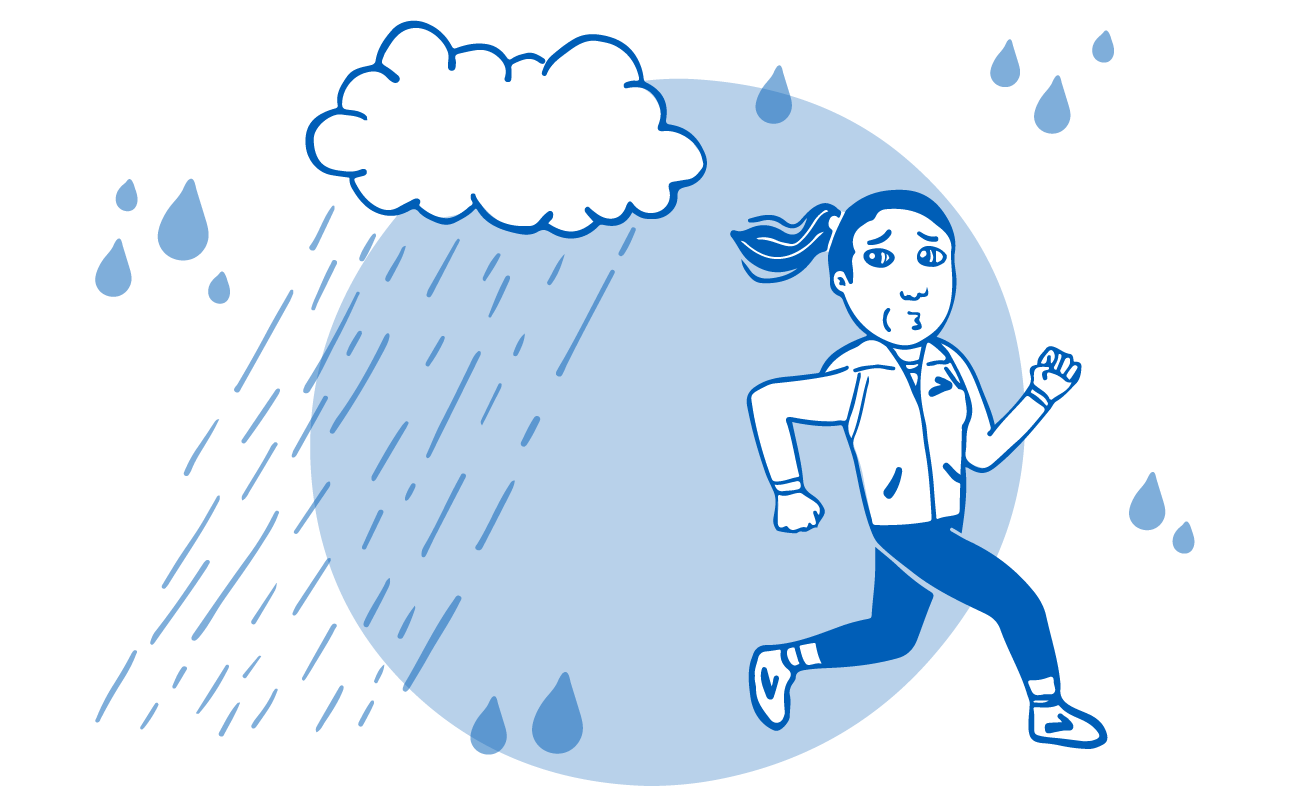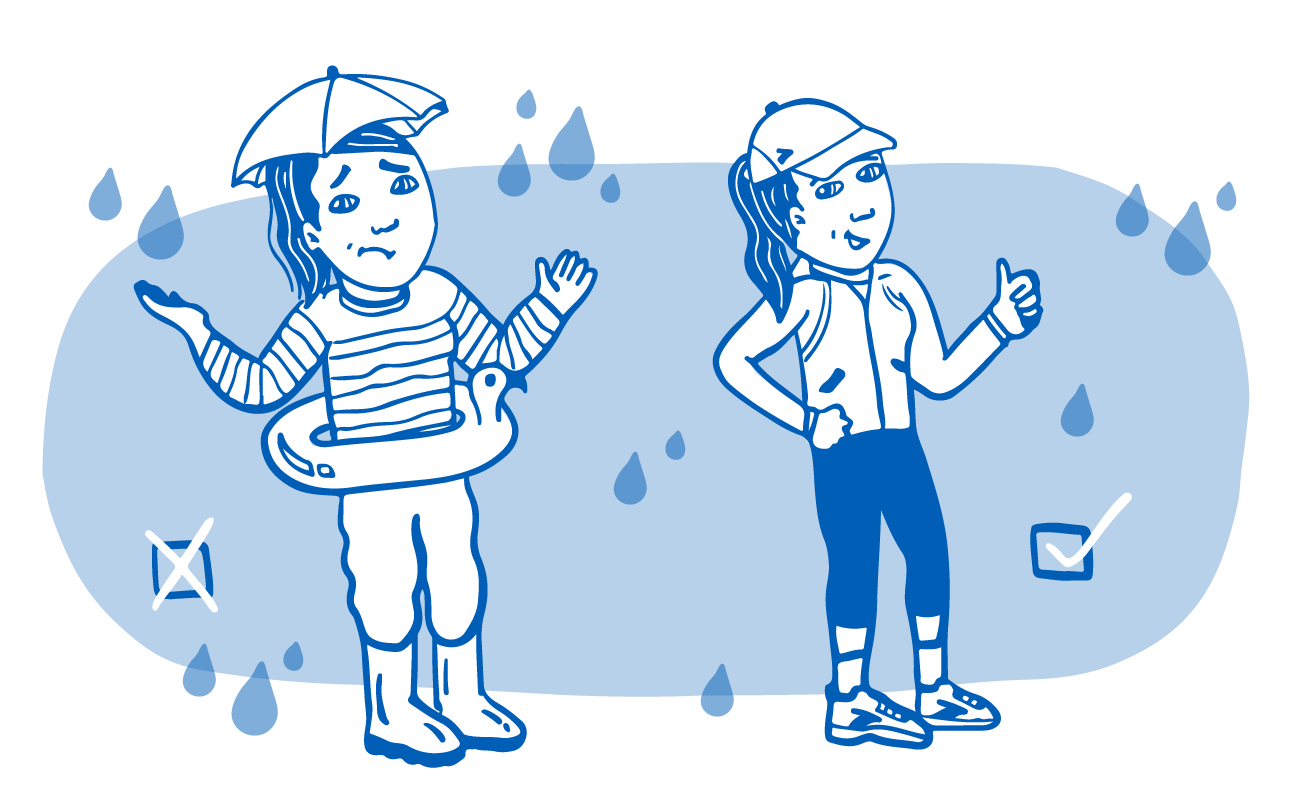Do you sing “rain, rain, go away” at the first sign of a drizzle? Follow these wet-weather tips to help you embrace the downpour.
Why run in the rain?
Running is hard enough, but doing it soaking wet can be unfun. No one likes getting weighed down by soggy clothes. Plus, extra moisture on your body can mean more chance for blisters, or perhaps worse — chafing.
So, why run in the rain? The answer is obvious — to show everyone else how badass a runner you are. We kid (mostly).
There might be several reasons runners take to the road, track, or trail during a rain shower. To some, running in the rain may feel refreshing, especially in warmer climates. Rain typically cools you down, so the body doesn’t have to work as hard as when it’s hot and dry outside.
To those training for a race, it’s important to get out in the elements and experience different conditions. Race day does not care about the weather. You’ll want to know your body and the gear you’re wearing is ready for stinging, sideways rain or a torrent that makes you wish you had gills.

If you’re new to running or hate getting out in the rain, these tips can help your wet-weather run more tolerable and safe.
Five tips for running in the rain
1. Get the right gear
If you’re getting after it in the rain, consider a less-is-more approach. Unless it’s very cold out, wearing more than a couple of layers is more likely to slow you down. Cotton is a no-no — it gets heavy when wet and doesn’t dry quickly. Moisture wicking fabrics and waterproof shoes are great options for wet weather. Make sure you wear a hat with a brim to keep the water out of your eyes.

2. Make sure you’re seen
All kidding aside, you want to be visible when running in the rain. Consider purchasing some reflective apparel or add some reflective tape to gear that you already own. A headlamp can also help, too, even in the daytime.
3. Go distraction free
Leave the earbuds at home if it’s raining. Not only do you risk ruining them in the wet weather, but you don’t need an extra thing to pull your focus away from your surroundings when it’s pouring rain.
4. Pay attention to the terrain
Tread carefully on inclines when running in the rain. Extra moisture on steep hills can cause some painful spills. If you are trail running, beware of slippery rocks, possible mudslides, and rising waters in creeks and riverbeds.
5. Don’t forget to hydrate
There is a type of lizard in Australia called a thorny devil that has adapted the ability to drink water through its feet. While you might be Australian, you are not this animal — just because it’s wet out doesn’t mean you should forgo your usual hydration routine.





